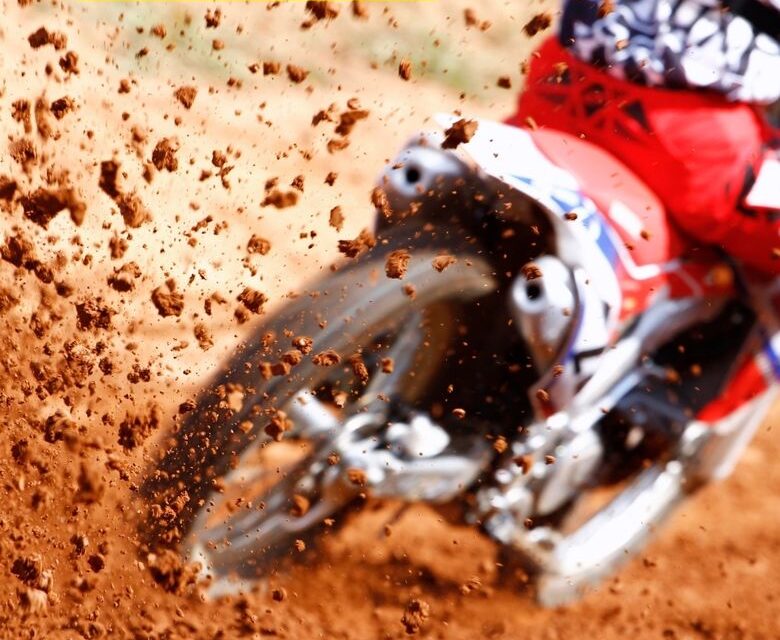Changing dirt bike tires can be a daunting task for both novice and experienced riders alike, but having the right tools can transform this challenge into a manageable and even enjoyable process. Enter the dirt bike tire changer—a game-changing device designed to streamline the tire replacement process and save valuable time.
These specialized tools are engineered to handle the tough, rugged nature of off-road tires, making them indispensable for anyone who frequently rides through rough terrains. Whether you’re preparing for a new trail adventure or simply maintaining your bike’s performance, a tire changer ensures a precision fit and reduces the risk of damage to your wheels and tires.
Gone are the days of struggling with tire irons and risking damage to your bike’s rims. With a dirt bike tire , you can achieve a professional-grade tire change with minimal effort. This innovative tool not only enhances the efficiency of your maintenance routine but also provides the peace of mind that your tires are mounted correctly and securely. In this guide, we’ll explore the features, benefits, and best practices for using a bike tire changer, helping you keep your ride in top shape and ready for any off-road challenge.
Revolutionize Your Ride: The Ultimate Guide to Dirt Bike Tire Changer
Dirt biking is more than just a sport; it’s a lifestyle that demands reliability, precision, and the ability to adapt to challenging terrains. For those who live and breathe dirt biking, maintaining your bike is crucial to ensure optimal performance. One essential maintenance task that can significantly impact your ride is tire changing. Enter the dirt bike tire changer—a tool designed to make this task quicker, easier, and more efficient. This comprehensive guide will delve into everything you need to know about dirt bike tire , from their benefits and types to the steps for using them and maintaining them.For more information visit here
Table of Contents
Understanding the Importance of a dirt bike tire changer
Before we dive into the specifics of tire changers, it’s important to understand why this tool is a game-changer for dirt bikers. Off-road tires are built to withstand rigorous conditions, and changing them manually can be challenging. A tire changer simplifies this process, ensuring that your tires are mounted correctly and securely. This not only saves you time but also reduces the risk of damaging your rims or tires.
Benefits of Using a Tire Changer
- Efficiency: Tire changers streamline the process, allowing you to change tires quickly and with minimal effort.
- Precision: They ensure proper alignment and installation, which is crucial for maintaining bike performance.
- Reduced Risk of Damage: By minimizing manual handling, tire changers reduce the risk of rim and tire damage.
- Consistency: With a tire changer, you achieve a consistent result every time, which is vital for high-performance riding.
Types of Dirt Bike Tire Changers
Not all tire changers are created equal. There are several types, each designed for different needs and preferences. Understanding these can help you select the right one for your requirements.
Manual Tire Changers
Manual tire changers are the most basic and affordable option. They typically consist of a set of levers and clamps that require physical effort to operate. While they may not be as fast as automated versions, they are effective for those who prefer a hands-on approach and have the space to accommodate them.
- Pros: Affordable, simple to use, no power required.
- Cons: Requires physical effort, may be less efficient.
Semi-Automatic dirt bike tire changer
Semi-automatic tire changers offer a blend of manual and automated features. They often come with a motorized bead breaker and a manual mount/demount system. This type strikes a balance between ease of use and cost.
- Pros: Faster than manual changers, less physical effort required.
- Cons: Higher cost, requires some power source.
Fully Automatic Tire Changers
Fully automatic dirt bike tire changer are the most advanced and efficient option. They handle nearly every aspect of the tire-changing process, from breaking the bead to mounting the tire. These changers are ideal for those who frequently change tires and require the highest level of efficiency.
- Pros: Extremely efficient, minimal physical effort, consistent results.
- Cons: Expensive, requires power and space.
Portable Tire Changers
Portable tire changers are designed for on-the-go use. They are compact and can be easily transported, making them ideal for riders who need to change tires at various locations, such as trackside or on the trail.
- Pros: Compact, easy to transport, versatile.
- Cons: May lack the robustness of stationary models, less feature-rich.
Choosing the Right Tire Changer for Your Needs
Selecting the right tire changer depends on several factors, including your budget, frequency of use, and available space. Here’s a breakdown of how to choose the best one for your needs.
Budget
- Low Budget: Consider a manual or portable dirt bike tire changer. These options are cost-effective and suitable for occasional use.
- Medium Budget: Semi-automatic changers offer a good balance of features and cost. They are suitable for regular use without breaking the bank.
- High Budget: Fully automatic changers are ideal for those who change tires frequently and need the utmost efficiency and convenience.
Frequency of Use
- Occasional Use: A manual or portable tire changer should suffice. These are great for DIY enthusiasts who only change tires a few times a year.
- Regular Use: If you frequently change tires, investing in a semi-automatic or fully automatic tire changer will save you time and effort.
Space and Setup
- Limited Space: Portable and manual changers are ideal for small workshops or home garages.
- Ample Space: If you have a larger workshop, a semi-automatic or fully automatic tire changer can be a valuable addition.
How to Use a Dirt Bike Tire Changer

Once you’ve chosen the right tire changer, it’s essential to know how to use it properly to get the best results. Here’s a step-by-step guide on using a dirt bike tire changer.
Preparation
- Gather Tools and Materials: Ensure you have all necessary tools, including tire levers, lubricant, and a pressure gauge.
- Safety First: Wear appropriate safety gear, including gloves and eye protection.
Removing the Old Tire
- Remove the Wheel: If necessary, detach the wheel from the bike.
- Break the Bead: Use the bead breaker tool to separate the tire from the rim.
- Mounting and Demounting: Use the dirt bike tire changer mount and demount tools to remove the tire from the rim. Apply tire lubricant to ease the process.
Installing the New Tire
- Prepare the New Tire: Lubricate the new tire and rim.
- Mount the Tire: Align the tire on the rim and use the changer to mount it.
- Check Alignment: Ensure the tire is properly seated on the rim and check for any misalignment.
Final Steps
- Inflate the Tire: Use a pressure gauge to inflate the tire to the recommended PSI.
- Inspect the Installation: Check for any issues and ensure everything is secure before reattaching the wheel to the bike.
Maintaining Your dirt bike tire changer
Proper maintenance of your tire changer ensures its longevity and optimal performance. Here are some tips for keeping your tool in top shape.
Regular Cleaning
- Clean Components: After each use, clean the tire changer to remove dirt and debris.
- Lubricate Moving Parts: Regularly lubricate the moving parts to ensure smooth operation.
5.2 Inspect for Damage
- Check for Wear and Tear: Regularly inspect dirt bike tire changer the tool for any signs of wear or damage.
- Replace Worn Parts: Address any issues promptly to prevent further damage.
5.3 Proper Storage
- Store in a Dry Place: Keep the tire changer in a dry, cool area to prevent rust and corrosion.
- Protect from Elements: If storing outside, use a cover to protect it from the elements.
Common Issues and Troubleshooting
Even with the best equipment, you might encounter some issues when using a dirt bike tire changer. Knowing how to troubleshoot these problems can save you time and frustration. Here are some common issues and how to address them:
Tire Bead Issues
- Problem: The tire bead does not seat properly on the rim.
- Solution: Ensure that the rim and tire are clean and free of debris. Use tire lubricant to help the bead seat correctly. If the bead still doesn’t seat, check for any damage to the rim or tire.
Difficulty Removing or Installing the Tire
- Problem: The tire is difficult to remove or install.
- Solution: Apply more tire lubricant to both the rim and tire. Make sure the dirt bike tire changer is set up correctly and that all components are in good working condition. If the problem persists, verify that you are using the correct size tools for your tire.
Rim Damage
- Problem: The rim gets scratched or damaged during the process.
- Solution: Ensure that the tire changer has proper padding or protection to prevent damage. Be gentle when mounting or dismounting the tire. Using rim protectors can also help reduce the risk of damage.
Air Leaks
- Problem: The tire leaks air after installation.
- Solution: Check the tire and rim for any foreign objects or debris that could cause leaks. Ensure that the tire is properly seated and that the valve stem is secure. If necessary, use a sealant to address minor leaks.
Best Practices for Using a dirt bike tire changer
To ensure the best results and extend the lifespan of your tire changer, follow these best practices:
Follow Manufacturer’s Instructions
- Read the Manual: Always read the manufacturer’s instructions and guidelines before using the tire changer.
- Adhere to Recommendations: Follow the recommended procedures for mounting, dismounting, and maintenance.
Use Proper Technique
- Apply Lubricant: Use a generous amount of tire lubricant to ease the process and prevent damage.
- Work Slowly: Take your time and don’t rush the process to avoid mistakes and damage.
Regular Maintenance
- Check Calibration: Ensure that the dirt bike tire changer is properly calibrated and adjusted for accurate performance.
- Inspect for Wear: Regularly inspect the tire changer for any signs of wear or malfunction.
Recommended Tire Changers
For those looking to purchase a tire changer, here are some highly recommended models across various categories:
Best Manual Tire Changer
- Model: BeadBuster XB-450
- Features: Portable, durable, and easy to use. Ideal for occasional use and tight budgets.
- Pros: Affordable, lightweight, and efficient for small jobs.
- Cons: Requires manual effort, less efficient for frequent use.
Best Semi-Automatic Tire Changer
- Model: Corghi A2020
- Features: Motorized bead breaker, manual mount/demount system, suitable for regular use.
- Pros: Faster than manual models, reduced physical effort.
- Cons: Higher cost, requires power.
Best Fully Automatic dirt bike tire changer
- Model: Hunter TCX610
- Features: Fully automatic operation, advanced features for precision and efficiency.
- Pros: Extremely efficient, minimal effort required, ideal for frequent use.
- Cons: Expensive, requires a significant amount of space.
Best Portable Tire Changer
- Model: Cheetah Rim Clamp
- Features: Compact and lightweight, suitable for on-the-go use.
- Pros: Easy to transport, versatile for various locations.
- Cons: May lack some features of stationary models, less robust.
Advanced Techniques for Tire Changing
Once you’re comfortable with the basics of using a dirt bike tire changer, you might want to explore advanced techniques that can further enhance your efficiency and precision. These techniques are especially useful for professional mechanics or serious enthusiasts who perform tire changes frequently.
Using a Tire Lever Properly
- Technique: When using dirt bike tire changer levers to assist with mounting or dismounting, ensure you are placing them in the correct position. Insert the lever between the tire and the rim, applying steady pressure to avoid damaging the rim or tire. Use multiple levers in sequence to gradually ease the tire onto or off the rim.
Adjusting Tire Pressure for Optimal Performance
- Technique: After mounting the tire, inflate it to the recommended pressure, but do not overinflate. Overinflation can lead to poor handling and increased risk of tire blowouts. Use a quality pressure gauge to ensure accuracy and adjust the pressure according to the manufacturer’s specifications.
Balancing the Tire
- Technique: Proper balancing is crucial for smooth riding and reducing vibration. Use a balancing machine or manual balancing techniques to ensure the tire is evenly balanced. Place the wheel on a balancer and adjust the weights until the wheel remains stationary in any position.
Dealing with Stubborn Tires
- Technique: Some dirt bike tire changer may be particularly challenging to mount or dismount. For stubborn tires, try using a combination of tire lubricant and heat to soften the rubber. Heating the tire slightly (using a heat gun, not an open flame) can make it more pliable and easier to work with.
Innovations in Tire Changer Technology
The tire changer industry has seen several innovations that enhance performance and ease of use. Here are some notable advancements:
Digital Tire Changers
- Features: Digital dirt bike tire changer come equipped with computerized systems that can precisely control the bead breaker, mounting, and demounting processes. They offer advanced diagnostics and calibration features for greater accuracy and consistency.
Integrated Inflation Systems
- Features: Some modern tire changers have built-in inflation systems that automatically inflate tires to the correct pressure. These systems often include pressure sensors and digital displays for precise monitoring.
Enhanced Rim Protection
- Features: Newer models feature advanced rim protection technology, such as padded clamps and adjustable arms, to minimize the risk of rim damage during the tire-changing process.
Quick Release Mechanisms
- Features: Innovations like quick-release mechanisms make it faster and easier to switch between different wheel sizes and types, improving efficiency for high-volume dirt bike tire changer.
Professional Tips from Experts
To help you further refine your tire-changing skills, here are some tips from experienced professionals:
Maintain Consistent Technique
- Tip: Consistency in your technique is key to achieving reliable results. Develop a routine that includes proper use of lubricants, correct mounting and dismounting procedures, and thorough inspection after each change.
Invest in Quality Tools
- Tip: Quality tools can make a significant difference in the efficiency and outcome of your tire changes. Invest in high-quality levers, rim protectors, and other accessories to ensure durability and performance.
Regular Training
- Tip: Keep your skills sharp by regularly practicing dirt bike tire changer. Consider attending workshops or training sessions to stay updated on the latest techniques and tools.
Safety Considerations
Safety should always be a top priority when performing tire changes. Here are some important safety considerations:
Personal Safety
- Wear Protective Gear: Always wear safety gloves and goggles to protect yourself from sharp edges and debris.
- Use Proper Techniques: Avoid using excessive force, which can lead to injury or damage. Follow the recommended procedures and techniques for handling and operating the tire changer.
Equipment Safety
- Regular Inspections: Frequently inspect your tire changer for any signs of wear or malfunction. Address any issues promptly to prevent accidents or further damage.
- Proper Storage: Store the dirt bike tire changer in a clean, dry area to prevent rust and corrosion. Ensure that all components are properly maintained and lubricated.
Reducing Environmental Impact
- Use Eco-Friendly Products: Opt for tire lubricants and cleaning products that are environmentally friendly and biodegradable.
- Maintain Tire Longevity: Regularly maintain your tires to extend their lifespan and reduce the frequency of replacements.
To sum up
To keep your bike in good working order and to ensure a comfortable ride, you must learn how to utilise a dirt bike tire changer. You can effectively manage tyre changes and maintain the best possible condition for your bike by being aware of the several types of tyre changers that are available, learning sophisticated procedures, and adhering to safety and maintenance best practices.
Keep in mind that having the proper tyre changer not only increases your productivity but also enables you to fully enjoy your off-road experiences. You’re equipped with the information and resources you need to handle tyre changes with assurance and accuracy. Cheers to replacing tires and biking!
4o mini










